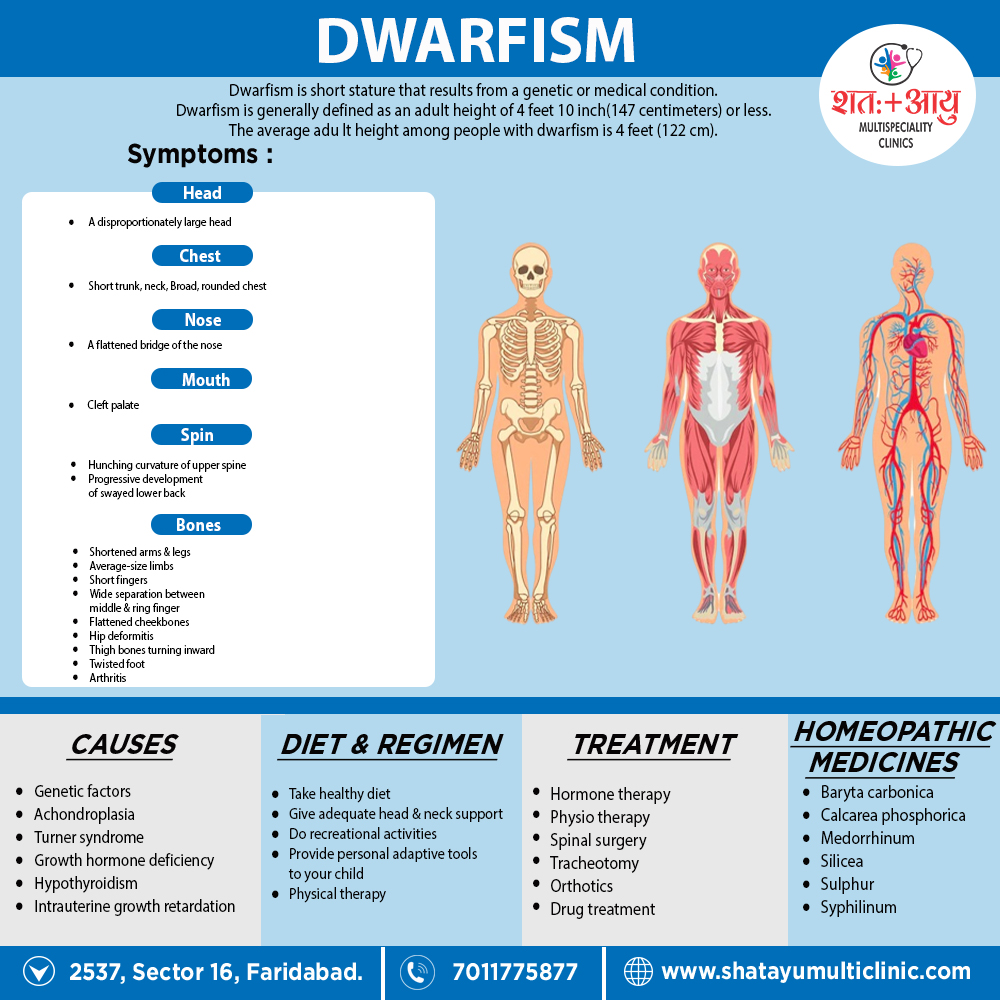Though there are many different causes of dwarfism, there are two main types of the condition: proportionate and disproportionate.
Disproportionate dwarfism:
Most people with dwarfism have disorders that cause disproportionately short stature.
Usually, this means that a person has an average-size trunk and very short limbs, but some people may have a very short trunk and shortened (but disproportionately large) limbs.
In these disorders, the head is disproportionately large compared with the body.
Almost all people with disproportionate dwarfism have normal intellectual capacities.
Rare exceptions are usually the result of a secondary factor, such as excess fluid around the brain (hydrocephalus).
The most common cause of dwarfism is a disorder called achondroplasia, which causes disproportionately short stature.
This disorder usually results in the following i.e.:
- An average-size trunk
- Short arms and legs, with particularly short upper arms also upper legs
- Short fingers, often with a wide separation between the middle also ring fingers
- Besides this, Limited mobility at the elbows
- A disproportionately large head, with a prominent forehead also a flattened bridge of the nose
- Progressive development of bowed legs
- Progressive development of swayed lower back
- Lastly, An adult height around 4 feet (122 cm)
Another cause of disproportionate dwarfism is a rare disorder called spondyloepiphyseal dysplasia congenita (in other words, SEDC).
Signs may i.e.:
- A very short trunk
- A short neck
- Shortened arms also legs
- Average-size hands also feet
- Broad, rounded chest
- Slightly flattened cheekbones
- Opening in the roof of the mouth (in other words, cleft palate)
- Hip deformities that result in thigh bones turning inward
- A foot that’s either twisted or out of shape
- Instability of the neck bones
- Progressive hunching curvature of the upper spine
- Progressive development of swayed lower back
- Vision also hearing problems
- Arthritis and problems with joint movement
- Adult height ranging from 3 feet (91 cm) to just over 4 feet (122 cm)
Proportionate dwarfism:
Proportionate dwarfism results from medical conditions present at birth or appearing in early childhood that limit overall growth and development.
So the head, trunk and limbs are all small, but they’re proportionate to each other.
Because these disorders affect overall growth, many of them result in poor development of one or more body systems.
Growth hormone deficiency is a relatively common cause of proportionate dwarfism.
It occurs when the pituitary gland fails to produce an adequate supply of growth hormone, which is essential for normal childhood growth.
Signs include:
- Height below the third percentile on standard pediatric growth charts
- Growth rate slower than expected for age
- Delayed or no sexual development during the teen years [1]

